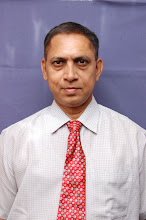Parampara (Sanskrit: paramparā) denotes a succession of teachers and disciples in traditional Vedic culture and Indian religions such as Hinduism, Sikhism, Jainism and Buddhism. It is also known as guru–shishya tradition ("teaching from guru to disciple").
The teaching is given in the form of a dialogue (Samvadey) between a Guru and a sishya. Spiritual knowledge requires our effort and the guidance of an acharya and cannot be gained independently. Spiritual knowledge is a systematic education programme where doubts are cleared by way of dialogue.
Vedanta is the essence of the scriptures. Vedanta enunciates the eternal principles of life and living. In Upanishads, we see these principles by way of a dialogue between the Guru and the student where the Guru talks about the unknown god to the student. Upanishads contain the philosophy of Vedanta. Veda means knowledge and anta means end. Thus, Vedanta means end of knowledge. It will take you to the ultimate of self-realization or god realization. Upanishads talk about your life and the very purpose of your life.
The first chapter of Uddhava Gita is preparing the ground for the Udhhava Gita teaching to take place, which will start from the second chapter of the text. In the 1st chapter, the developments are presented in which Uddhava a relative and devotee of lord Krishna is going to Krishna and surrenders to him. Uddhva the lord becomes Uddhava the disciple. Krishna becomes Guru the teacher. Always the teaching is between a Guru and a Sishya. In no other relationship teaching can take place. It will not be an education otherwise.
In Guru – Sishya relationship, one should become a disciple, show the reverential attitude in the form of Bhakti and Shravanam, and imbibe the teaching in a consistent and a systematic manner. In Bhagavad Gita, teaching takes place between Krishna and Arjuna in 18 Chapters. In Uddhava Gita, the systematic teaching takes place between Krishna and Uddhva in 24 chapters. Therefore, consistent and systematic teaching is required by way of involvement on the part of Guru and learning is required on the part of the disciple. Guru has to accept to play the role of Guru and Sishya also likewise. This kind of involvement alone opens up the communication channel between Guru and Shisya.
Brahma and other devatas have come to Dwaraka and requests Krishna to come to Vaikunta. Krishna says that he has one task, which is incomplete, and it is the destruction of Yadava kula. Brahma and Rishi Sabham is the cause for Yadava kula’s destruction. Ultimately, yadavas have to quarrel among themselves and kill each other. Krishna says until this happens successfully he cannot quit the world. He says, “I will arrange for the destruction of yadava kula to happen”. Krishna addresses all elderly people “let us go to Prabhasa thirtha (holy place) and remove our papam for our next janma. Krishna gets ready for this action during which time Uddhava comes to Krishna for help. Uddhava approaches lord Krishna when he along with elderly gets ready to leave for Prabhasa thirtha. Uddhava at this juncture is associated with Krishna. Krishna also belongs to Uddhava family.
Uddhava talks about the glories of Bhagavan, which is the reason for Uddhava not able to quit Bhagavan.
Thus, Lord Krishna starts teaching Uddhava from 2nd chapter of Uddhava Gita in the 11th Skanda of Bhagavatham.
Be blissful.
S.SEKAR
Contact: sekrajc@yahoo.com
28-02-2018
